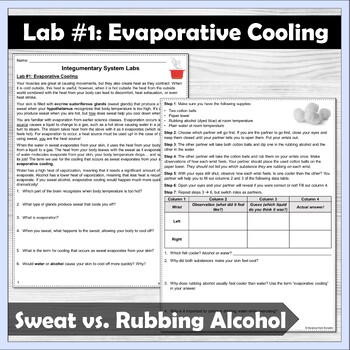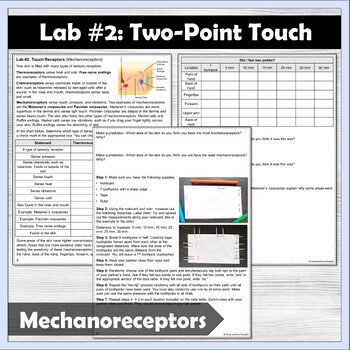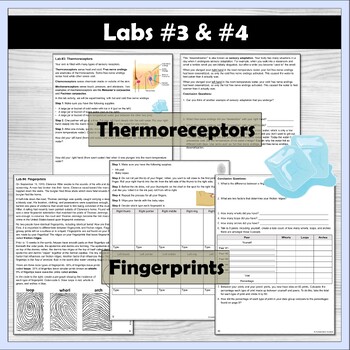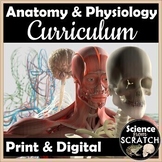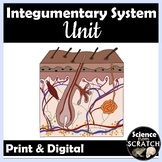Integumentary System (Skin) Lab Stations
What educators are saying
Also included in
- Do you want to engage your Anatomy students in a meaningful activity every single day? Are you ready to cut down time spent lecturing and prepping and to maximize student learning? This Anatomy and Physiology Curriculum Bundle is exactly what you need to (1) cut down your time lecturing, (2) minimizPrice $280.00Original Price $560.34Save $280.34
- Looking for a low-prep Integumentary System Unit that is jam-packed with hands-on activities that are sure to engage all learners within your classroom? Look no further!This activity-based unit is perfect for new Anatomy and Physiology teachers who need a comprehensive unit as they navigate teachingPrice $25.00Original Price $37.25Save $12.25
- This custom bundle was created for MaryBeth on 1/22/22. All items in a custom bundle are discounted 20%.If you are interested in a custom bundle at a 20% discount, please email me at sciencefromscratch2012@gmail.com with a list of the items you would like included within the bundle.Requirements: CusPrice $114.00Original Price $123.95Save $9.95
Description
These four integumentary system laboratory stations are a low-prep way to teach your anatomy and physiology, biology, or health students about the science of sweating and evaporative cooling, mechanoreceptors and sensitivity in the skin, thermoreceptors and sensory adaptation, and fingerprints! The lab stations take approximately 80-minutes total to complete.
Materials needed: cotton balls, rubbing alcohol, blue food coloring, toothpicks, notecards, tape, rulers, beaker/bucket of ice water, beaker/bucket of room temperature water, beaker/bucket of warm water, ink pads, baby wipes or wet paper towels
Lab Station #1: Evaporative Cooling
- At this station students will read an explanation of how sweat helps us to cool down. They will be introduced to the concept of evaporative cooling.
- After answering a few questions about evaporative cooling, students will experiment with the difference in evaporative cooling between rubbing alcohol and “sweat” (regular water). They will be able to see that liquids with a lower heat of evaporation cause quicker and more dramatic evaporative cooling.
Lab Station #2: Mechanoreceptors
- At this station students will create a tool to determine which areas have the highest concentration of mechanoreceptors (Pacinian & Meissner’s corpuscles). After creating the tool, they will utilize the tool to test their fingertips, palms, back of their hands, forearm, upper arm and neck.
Lab Station #3: Thermoreceptors
- At this station students will read about hot free nerve endings and cold free nerve endings.
- After understanding the two types of free nerve endings, they will put one hand in cold water and one hand in warm water. After allowing their free nerve endings to “desensitize” they will simultaneously plunge both hands into room temperature water and notice the differences.
- After feeling these differences for themselves, they will read an explanation of the phenomenon they observed and answer follow-up and extension questions.
Lab Station #4: Fingerprints
- At this station students will read about the first case in the United States “solved” using fingerprints as evidence. They will also get an anatomical perspective on how friction ridges are formed through dermal papillae and amniotic fluid.
- Students will then stamp their own fingerprints and calculate the average number of swoops, loops, and whorls within their peer group.
Don’t want to use one of these labs or short on time? Skip one! The labs are all independent of each other.
I complete these lab activities with my A&P students in small chunks, interspersing the lab time with chunks of time completing these Functions of the Integument Doodle Notes. These two resources were designed to be completed at the same time to reinforce the content. I find that completing little portions of each resource during our class time together prevents students from burning out lecture and the lab activities. If you would like to see how I piece together these doodle notes and the lab activities, check out my free Integumentary System Pacing Guide.
Included in this resource you will receive:
- Teacher Instructions
- 10-page lab
- Digital version of the lab through Google Slides™
- 10-page lab KEY
This resource is a smaller part of my larger bundle, the Integumentary System Unit. Click the link to see what else is included! Click here to see my Full-Year Anatomy & Physiology Curriculum.


